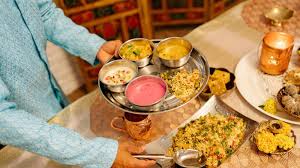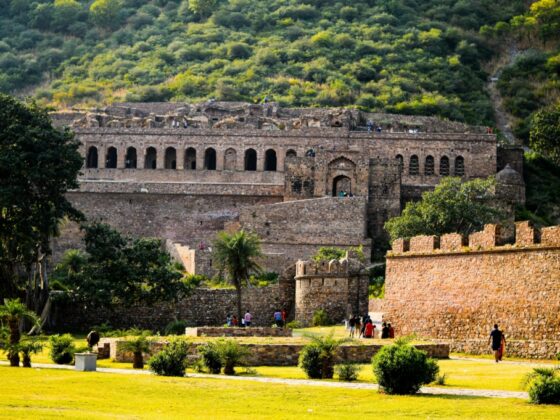Rajasthan’s royal kitchens crafted exquisite desserts, blending rich ingredients with time-honored techniques. While Ghewar and Malpua remain popular, many traditional royal sweets have faded into obscurity. These forgotten delicacies once graced the tables of Rajput kings and queens, offering indulgence beyond imagination. The forgotten royal desserts of Rajasthan, from Chandrakala to Mawa Kachori, showcase the rich culinary heritage once enjoyed by Rajput kings and queens.

1. Chandrakala – The Crescent-Shaped Delight
Chandrakala, a sweet similar to Gujiya but more intricate, delighted royal families. The flaky outer layer held a rich filling of khoya, nuts, and cardamom. After deep-frying, chefs soaked it in fragrant sugar syrup, making it a highlight of festive celebrations in royal households.
2. Mawa Kachori – A Luxurious Take on the Classic Snack
Unlike its savory counterpart, Mawa Kachori offered a dessert filled with khoya, nuts, and saffron. Royal chefs deep-fried it and dipped it in sugar syrup, creating a rich and flavorful treat. While Jodhpur still serves Mawa Kachori, its royal legacy remains lesser known.
3. Dil Khushal – The Rajputana Besan Sweet
Also known as Mohanthal in Gujarat, Dil Khushal defined Rajasthan’s royal kitchens. Chefs used gram flour, ghee, and sugar to create its rich, crumbly texture. They enhanced its flavor with cardamom and saffron, serving it during grand feasts and royal ceremonies.
4. Mishri Mawa – A Hidden Sweet Gem
Mishri Mawa, a simple yet indulgent dessert, combined milk solids with crystallized sugar. Udaipur’s royal kitchens perfected its preparation by slow-cooking mawa and adding large sugar crystals, creating a unique texture and a melt-in-the-mouth experience.
5. Balushahi – Rajasthan’s Answer to Doughnuts
Balushahi, still found in some parts of India, had a more elaborate royal version. Chefs prepared it with pure ghee, maida, and saffron to create a crisp outer layer with a soft, syrupy inside. Rajput kings relished this sweet during special occasions, treasuring its delicate balance of flavors.
Why These Desserts Faded Over Time
Changing culinary preferences and the complexity of their preparation contributed to the decline of these royal desserts. Many required extensive labor, slow-cooking techniques, and rare ingredients like saffron and dry fruits. As modern kitchens favored convenience, these time-intensive recipes gradually disappeared.
Reviving Rajasthan’s Lost Royal Desserts
Heritage chefs and luxury hotels now bring back these forgotten delicacies, offering them in fine dining experiences. Some families in Rajasthan continue preserving these recipes, ensuring the legacy of royal sweets stays alive.
Conclusion
The forgotten royal desserts of Rajasthan, from Chandrakala to Mawa Kachori, reflect the rich culinary heritage of Rajput royalty. These sweets symbolize an era where food represented more than nourishment—it embodied artistry, tradition, and opulence. Rediscovering these flavors preserves history and offers a taste of Rajasthan’s royal past.




